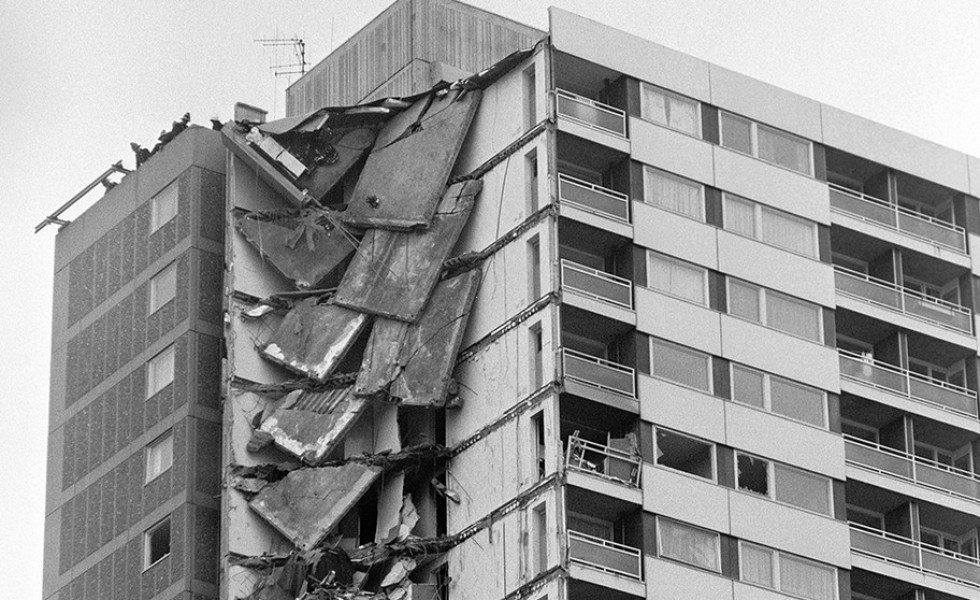Why is the Building Safety Regulator targeting large panel systems?
26/3/24
On 16 May 1968, four people died and 17 others were injured after the 22-storey Ronan Point tower block in east London partially collapsed.
A gas explosion in an 18th-floor flat blew out external load-bearing flank wall panels, triggering a progressive collapse down one corner of the block. This collapse was caused by the large panel system (LPS) construction method that was used by contractor Taylor Woodrow Anglian, which involved pre-cast concrete panels being stacked on top of each other without a supporting structural frame.
"Some owners are not even aware that they have LPS buildings. Many councils have transferred their stock to housing authorities, potentially losing the knowledge"
LPS was a common construction method for high-rise housing blocks built in the 1950s and 1960s, and an unknown number remain unremediated. But Construction News has learnt that the Building Safety Regulator (BSR) will step in with an inspection regime. A BSR spokesperson told CN that it will prioritise assessments of buildings clad with aluminium composite panels (the material used on Grenfell Tower), as well as LPS buildings built between 1957 and 1973 that "cannot confirm remediation work has been carried out and have [piped] gas systems/networks".
The Building Safety Act 2022 (BSA) has also concentrated minds on the issue, although incomplete or absent data makes it tricky to assess its scale.
"Remedial works should have been carried out in the [late 1960s and] 1970s, before computers became commonplace. Given this, the records from that time are poor to non-existent," said Lena Barnes, senior solicitor in the construction and engineering team at law firm Devonshires.
Steve Cross, a partner at construction consultancy Ridge and Partners, explained that some building owners may have gained "false comfort" in the past from inadequate visual surveys conducted by engineers without LPS expertise.
"Some owners are not even aware that they have LPS buildings," he added. "Many councils have transferred their stock to housing authorities, potentially losing the knowledge as part of the process."
"Irrespective of height, in the absence of sufficient records, all LPS buildings should be inspected, and the sharing of this information would ascertain whether… the BSA contains suitable provisions"
There was no legal requirement to carry out regular structural surveys of high-rise buildings until the BSA came into force last year. "Given this, the LPS buildings have simply fallen through the gaps and issues are now coming to light following recent investigations," said Barnes.
One such building was Barton House in Bristol, which had to be partially evacuated in November 2023 over fire-safety concerns. At the time, city mayor Marvin Rees said the building's construction could leave a "material risk to the structure of the block in the event of a fire, explosion or large impact".
Concerns centred on an "apparent lack of structural ties between the floors and the load-bearing external walls", he said. "There is lower fire resistance of these structural elements and less concrete cover than set out in the original plans for the floors." Remediation of Barton House is ongoing and should be finished by 23 February, according to the latest information from the city council.
The Guardian and Independent reported in 2018 that LPS was present in 575 tower blocks across the UK. However, the government has not confirmed the exact scale of the issue. It has argued that local authorities are responsible for keeping structural safety conditions under review, not central government.
Following the Grenfell fire in 2017, the government advised all local authorities and housing associations to seek expert advice on LPS in the buildings they own. Local authorities were asked to check whether these buildings were structurally sound for fire compartmentation and remove gas supplies to mitigate risk if the blocks could not withstand an explosion of 5 pounds per square inch. Some buildings subsequently had their gas supplies removed.
In a written parliamentary answer on 6 December last year, housing minister Lee Rowley declined to say how many LPS blocks required remediation.
He did note that the BSR, which sits within the Health and Safety Executive, "is implementing a new safety-case regime which all occupied 'higher-risk buildings', including all blocks of flats more than 18 metres, will be subject to".
Rowley added that data from the new regime "will provide the regulator with more information about the prevalence and current condition of LPS buildings".
Despite the BSR's intervention, some LPS buildings may not be tall enough to fit within the official 18-metre or seven-storey scope of its regulatory remit. "Irrespective of height, in the absence of sufficient records, all LPS buildings should be inspected by suitably qualified experts, and the sharing of this information would ascertain whether or not the new regime within the BSA contains suitable provisions," said Barnes.
There is another obligation to consider structural integrity as part of general fire precautions within the Regulatory Reform (Fire Safety) Order 2005 as amended by the Fire Safety Act 2021. This covers all buildings with more than two residential dwellings, and Barnes argued that assessments of this type "should include consideration of the structure of an LPS building".
She added: "There is not a great deal of guidance on this requirement, and to a large extent it has been overshadowed by the more express requirements in the BSA for higher-risk buildings."
A further complication is that LPS-affected buildings are too old to be covered by the BSA's 30-year liability period for claims under changes to the 1972 Defective Premises Act. "In terms of the original building works, I can't see there being any recovery options," Barnes said.
Source; Construction News

